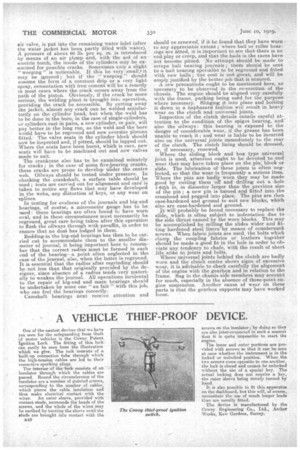\ A VEHICLE THIEF-PROOF DEVICE.
Page 20

If you've noticed an error in this article please click here to report it so we can fix it.
One of the neatest devices that we have yet seen for the safeguarding from theft of motor vehicles is the Cowey • Patent Ignition Lock. The fitting of this lock can easily be seen from the illustration which we give. The lock consists of a built-up connection tube through which the high-tension cables are led to their respective sparking plugs.
The interior of the dock consists of an insulator through which the cables are passed. Round the circumference of the insulator aro a number of pointed screws, corresponding to the number of cables, which pierce the cable insulation and thus make electrical contact with the wires. An outer sleeve, provided with contact studs, surrounds the heads of the screws, and the whole of the wires may be earthed by turning the sleeve until the ends are brought into contact with the screws on the insulator ; by doing so they are also inter-connected in such a mannei that it is quite impossible to start the
engine. .
The inner and outer portions are provided with arrows So that it, can be seen at once whether the instrument is in the locked or unlocked position. When the two arro,ws come opposite to one another, the lock is close-d and =not be unlocked without the use of a special key. The actual locking does not require a key, the outer sleeve being merely turned by hand.
It is also possible to fit this apparatus on the dashboard, but this will, of course, necessitate the use of much longer leads than are usually fitted.
The device is manufactured by the Cowey Engineering Co., Ltd., Archer Works, Kew Gardens, Surrey.
























